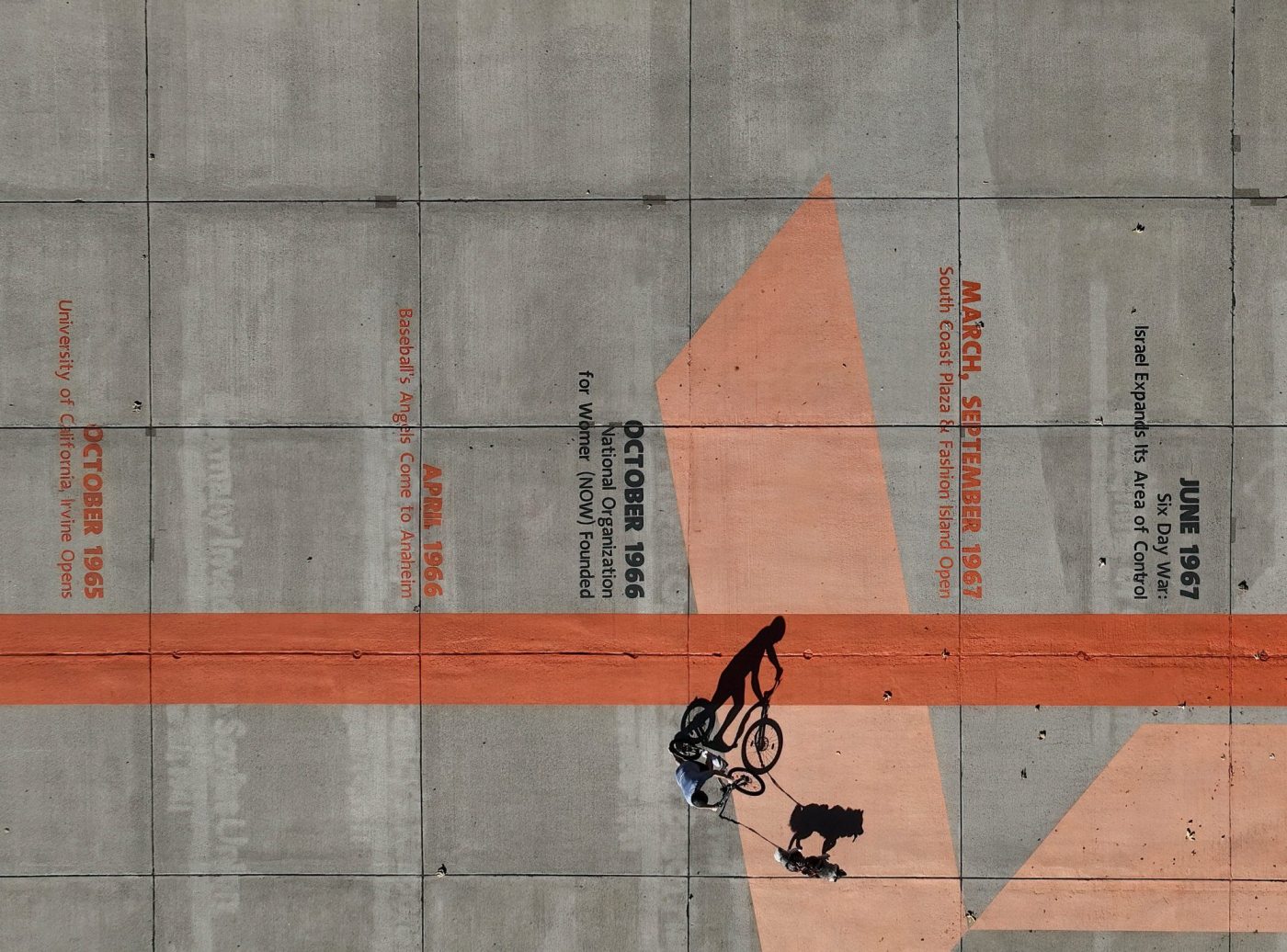Some key moments in history after 1990 include the Y2K bug, the first iPhone sale, the 9/11 attacks, wars in Afghanistan and Iraq, the COVID-19 pandemic and the creation of Facebook, Instagram, TikTok and the social media phenomenon.
The Walkable Historic Timeline in Irvine’s Great Park ends in 1990, leaving those technological advancements and cultural shifts, and more, unaddressed. And the Great Park board, made up of Irvine’s councilmembers and mayor, unanimously wants to change that.
The 2,604-foot walkway starts in 13,000 B.C., chronicling 162 historical milestones along the way, and was last updated in 2013.
Councilmember Larry Agran, spearheading the move to modernize it, said during Tuesday’s Great Park Board meeting that it was time to update the timeline with events from 1990 to the present day.
“There’s been a lot of rich global and regional history in that period,” said Agran.
Located by the Visitor Center, near the Great Park Sports Complex, the timeline is painted on concrete. In addition to adding historical events post-1990, Agran also wants to utilize technological advancements “to bring the timeline to life in new ways, beyond just paint on concrete,” he said in a city memo.
“Interactive technology, linkages to additional online content through use of QR codes, and other possible interactive features can allow for a world of new possibilities with regard to enhancing the Walkable Historic Timeline,” Agran said.
Adding these features, Agran said at Tuesday’s meeting, can make the timeline “serve as a growing educational feature” in the Great Park.
Visitors can borrow a handbook from the Great Park Visitor Center to read about the 162 historical events on the timeline as well as learn why the historical milestones on the timeline were selected. Agran also wants to update that handbook, including the “integration of digital features that might be appropriate,” he said.
City staffers are working on a proposal for the improvement of the Walkable Historical Timeline, including incorporating electronic features as well as updating the handbook. It will be treated as a capital project, where resident tax dollars will go into the project. The plan staffers put together will include costs as well as a proposed timeline.
In 2013, two UC Irvine history professors, Keith L. Nelson and Spencer C. Olin, researched and chose the 162 historical events listed on the timeline, once the Marine Corps Air Station El Toro’s taxiway. Nelson has since died, Agran said.
“Happy to report, however, that Spencer Olin kept working away and he (has) actually prepared draft historic entries that he has indicated that he’s happy to pass on to professional historians that we might hire to take the project forward,” Agran said.
Agran said the presumption is that staff, in formulating a plan of action, will look at “bringing professional historians on to at least review (Olin’s) work and maybe carry it forward a little bit as well.”
Irvine has embarked on a $1 billion development within the Great Park. The 300 acres of amenities set to be developed include the Veteran’s Memorial Park and Gardens, botanical gardens and a 14,000-seat amphitheater in partnership with Live Nation.
Great Park is already home to a 194-acre sports complex that is twice the size of Disneyland with ball fields, a soccer stadium and sand volleyball courts; trails; an arts pavilion; and, most recently, Wild Rivers.





